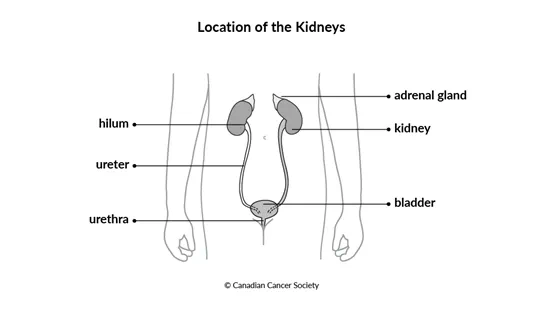What is Wilms tumour?
Wilms tumour starts in immature (embryonic) kidney cells. A cancerous (malignant) tumour is a group of cancer cells that can grow into and destroy nearby tissue. It can also spread (metastasize) to other parts of the body.
The kidney is part of the urinary system. There are usually 2 kidneys, one on either side of the backbone, deep inside the upper part of the abdomen. The kidneys make urine by filtering water and waste from the blood.
Cells in the kidney sometimes change and no longer grow or behave normally. These changes may lead to non-cancerous (benign) tumours such as congenital mesoblastic nephroma, which develops in very young children.
Changes to cells of the kidney can also cause precancerous conditions. These are called nephrogenic rests. Sometimes these go on to become cancer and sometimes they go away by themselves. Precancerous means that the abnormal cells are not yet cancer, but there is a chance that they may become cancer. The most common precancerous condition of the kidney is nephroblastomatosis.
But in some cases, changes to kidney cells can cause Wilms tumour. Wilms tumour is the most common type of kidney cancer in children. It is usually diagnosed in children 2 to 4 years old.
Rarer types of kidney cancer can also develop in children. These include clear cell sarcoma, rhabdoid tumour and renal cell carcinoma. Together these more uncommon types of cancer account for up to a quarter of all kidney tumours in children and adolescents.

The kidneys
Types of kidney tumours in children
Your trusted source for accurate cancer information
With support from readers like you, we can continue to provide the highest quality cancer information for over 100 types of cancer.
We’re here to ensure easy access to accurate cancer information for you and the millions of people who visit this website every year. But we can’t do it alone.
Every donation helps fund reliable cancer information, compassionate support services and the most promising research. Please give today because every contribution counts. Thank you.
